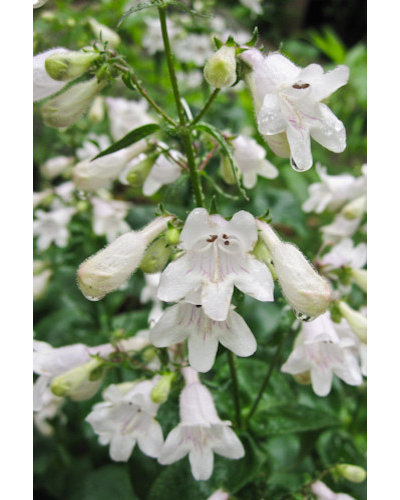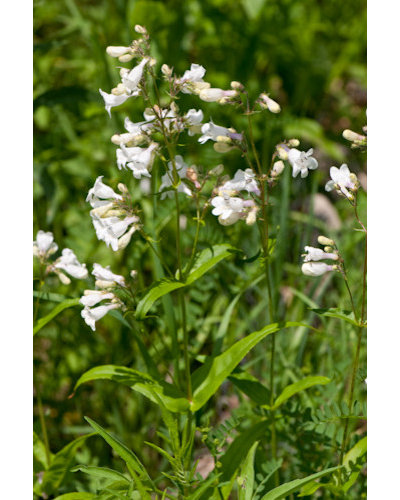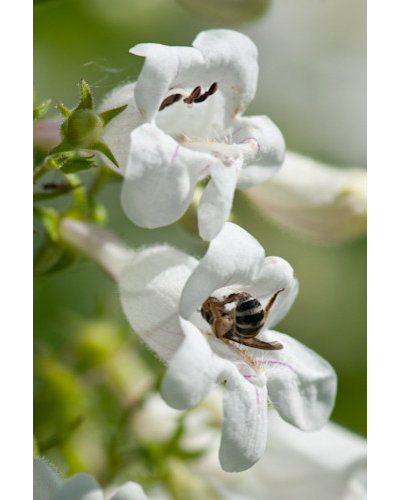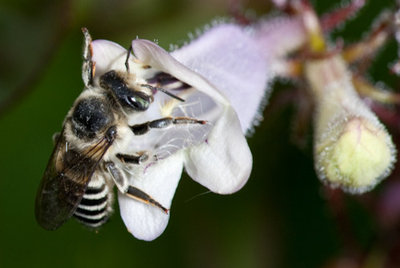If you are new to gardening with native plants and are looking for a good introductory plant to try, foxglove beardtongue (
Penstemon digitalis) is an excellent choice. This Penstemon species will rival any cultivated ornamental with its large, white flowers; upright form; and long-lasting blooms. It is easy to grow, tolerates most soil types, requires little to no water once established and fills that void in May when little else is flowering. The flowers attract many types of pollinators, including bees, flies and hummingbirds. If you are ready to take the plunge and try some natives, I don’t think you will be disappointed with this perennial.

Holm Design & Consulting LLC
Botanical name: Penstemon digitalisCommon names: Foxglove beardtongue, smooth beardtongue
Origin: Native to eastern North America, except Florida; the western part of its range includes South Dakota and south to Texas
Where it will grow: Hardy to -40 degrees Fahrenheit (USDA zones 3a to 9a; find your zone)
Typical plant communities: Prairies, woodland edges and field margins
Water requirement: Medium to dry, well-drained soil; sand to loamy clay
Light requirement: Full sun to partial shade
Mature size: 24 inches to 36 inches tall and 12 inches to 18 inches wide
Benefits and tolerances: Tolerant of most soil types
Seasonal interest: Large, white flowers in the spring and glossy green foliage that remains attractive into the summer months
When to plant: Spring or fall

Holm Design & Consulting LLC
Distinguishing traits. Foxglove beardtongue has large, bold white flowers that are arranged in clusters (panicles) on each flower stalk. The flower stems are sturdy and remain upright long after the flowers have faded. The bright green glossy leaves clasp the flower stalk, forming ladder-like tiers.
How to use it. Foxglove beardtongue can be used in a perennial border or in an informal prairie or naturalized planting. Its medium height and white flowers are a welcome, colorful addition in early spring. The flowers typically open in May, bridging the gap between the early woodland flowers and perennials that shine in midsummer.

Holm Design & Consulting LLC
Planting notes. Foxglove beardtongue often produces seedling rosettes near the parent plant. These shallow-rooted seedlings can be transplanted in early spring. Divide larger, mature plants in the fall.
Shown: A sweat bee (
Halictus sp) feeding on pollen near the opening of the flowers

Holm Design & Consulting LLC
Pollinator notes. The flowers have four fertile stamens, held near the top of the flower. There is also one sterile stamen (staminode) that is covered with bristly hairs, located in the lower half of the tubular flower — hence the common name beardtongue. Its bristles and lower position force pollinators upward, closer to where the pollen is produced in the fertile stamens.
Medium-size worker bumblebees and leafcutter bees (
Megachile sp, shown here) get pollen deposited on the top of their thorax and abdomen when they enter the flowers to feed on nectar. These are difficult places for the bees to comb the pollen from, and some pollen remains and is transferred to the next foxglove beardtongue flower visited.
Light to dark pink stripes in the throat of the flower act as nectar guides, visually guiding pollinators to the nectaries in the bottom of the flower.





